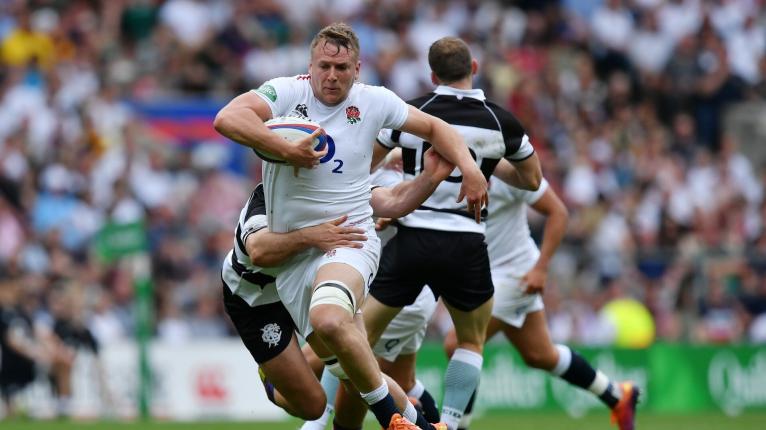Best back row in the Premiership? The top six contending depth charts

From contesting at the breakdown to leading the defensive line, and often taking on core roles as primary ball-carriers, lineout targets and providing ball-security, a lot is demanded of the modern back row forward.
They aren’t considered to have the same influence on a game that the half-backs do and when the set-piece is discussed, all eyes go to the front and second rows, but the loose forwards’ impact on a game is usually up there with the most significant of contributors to the final outcome.
After an apparent dearth of traditional opensides in previous Rugby World Cup cycles to the abundance of young talent emerging at the position currently, English rugby and the Gallagher Premiership’s back rows are seemingly always a topic of conversation.
Those aforementioned emerging talents, coupled with a summer of noteworthy recruitment, have the standout Premiership back rows looking in pretty good shape ahead of the 2019/20 season.
We’ve put together depth charts for the top six units in the competition, but which looks strongest with the new season looming?
1st string – Jean-Luc du Preez, Tom Curry, Jono Ross
2nd string – Mark Wilson, Ben Curry, Dan du Preez
3rd string – Cameron Neild, Sam Dugdale, Josh Beaumont
The arrivals of the du Preez twins and Wilson catapult an already impressive Sale unit into contention with the best in the league. The first- and second-string groups, as listed here, are interchangeable and may well look different to the club’s coaching staff, as there is clearly no lack of talent or possible combinations.
Dugdale is a bright talent in the club’s senior academy and if Neild is viewed primarily as a hooker and Beaumont as a lock – despite the signing of Lood de Jager – then Teddy Leatherbarrow, Ciaran Booth and Sam Moore come into the mix.
Bath
1st string – Zach Mercer, Sam Underhill, Taulupe Faletau
2nd string – Tom Ellis, Josh Bayliss, Francois Louw
3rd string – Mike Williams, Miles Reid, Nahum Merigan
If the award were simply for the most exciting back row, it would probably have to go to Bath. Mercer and Faletau are superb ball-carriers and in Underhill, Louw and Bayliss, Bath have three predatory breakdown threats, all of whom are capable of providing transition attack opportunities.
Ellis and Williams bring work rate to the blindside and Merigan is a name worth keeping an eye on over the next few seasons, having excelled as a ball-carrier in the U18s for the last couple of years.
1st string – Jordan Taufua, Guy Thompson, Hanro Liebenberg
2nd string – David Denton, Tommy Reffell, Sione Kalamafoni
3rd string – Sam Lewis, Henri Lavin, Jordan Coghlan
Leicester make the cut due to their impressive recruitment of Taufua and Liebenberg, which gives them a first-string group that is a match for anyone else in the competition. It’s tough to say the depth is there that both Sale and Bath boast, though.
The likes of Lewis, Reffell and Lavin will have their hearts set on making an impact this season and proving their worth, something which could help Leicester’s projected depth chart for the coming years look much more solid.
Harlequins
1st string – Chris Robshaw, Semi Kunatani, Alex Dombrandt
2nd string – Renaldo Bothma, Jack Clifford, James Chisholm
3rd string – Archie White, Will Evans, Tom Lawday
It doesn’t have some of the bigger names that the Sale and Bath groups do, but Quins have assembled a pretty solid unit of loose forwards. If Kunatani keeps acclimatising to English rugby, Robshaw continues to prosper without the demands of international rugby and Dombrandt makes another leap, that starting trio could cause plenty of problems.

Injuries have held Bothma and Clifford back, although their ability on the pitch is not questioned, and Chisholm caps a very impressive second group. Evans, who was highly thought of by Eddie Jones a couple of seasons ago, has moved down from Leicester and will be hopeful of realising his significant potential under Paul Gustard’s tutelage.
Wasps
1st string – Brad Shields, Thomas Young, Nizaam Carr
2nd string – Tom Willis, Jack Willis, Sione Vailanu
3rd string – Ben Morris, Will Wilson, Alex Rieder
Wasps’ fortunes overall may have taken a tumble last season, but even with the departure of Nathan Hughes, they can still put together three rather formidable back row groups. If the Willis brothers can stay fit and kick on next season, they’ll push for inclusion in that first-string group, too.
Wales’ plethora of opensides, South Africa’s wealth of back row options and England’s burgeoning group of young loose forwards will all be positives for Wasps in terms of the availability of Young, Carr and the Willis brothers during international windows.
Gloucester
1st string – Ruan Ackermann, Jaco Kriel, Ben Morgan
2nd string – Lewis Ludlow, Aaron Hinkley, Jake Polledri
3rd string – Freddie Clarke, Josh Gray, Jack Clement
The success of the Cherry and White group could ride on whether or not Kriel can still fit. When he is, the South African is among the best opensides in world rugby, although there’s no denying that injuries have held him back in recent seasons. The consistency of Ackermann and Morgan was key to Gloucester’s trip to the playoffs earlier this year.
Polledri brings international class, too, although the second- and third-string groups are heavy on potential, with Hinkley coming off the back of two impressive seasons with the England U20s and both Gray and Clement likely to be in that mix for 2019/20. Some teams may have slightly more established depth at the position, such as Exeter Chiefs, but Gloucester are fortunate to avoid too many international call-ups in most windows.
Watch: Premiership clubs to avoid Brexit uncertainty over player eligibility
































































